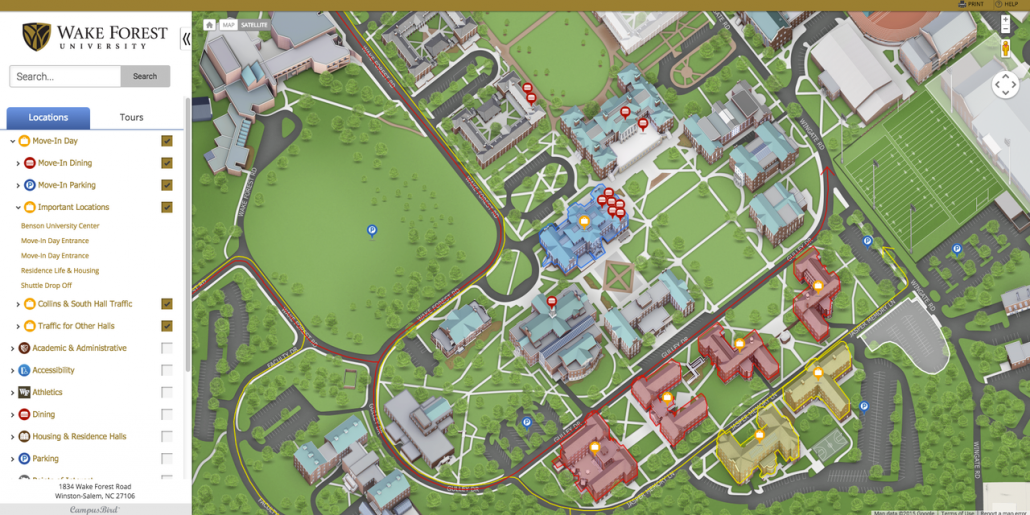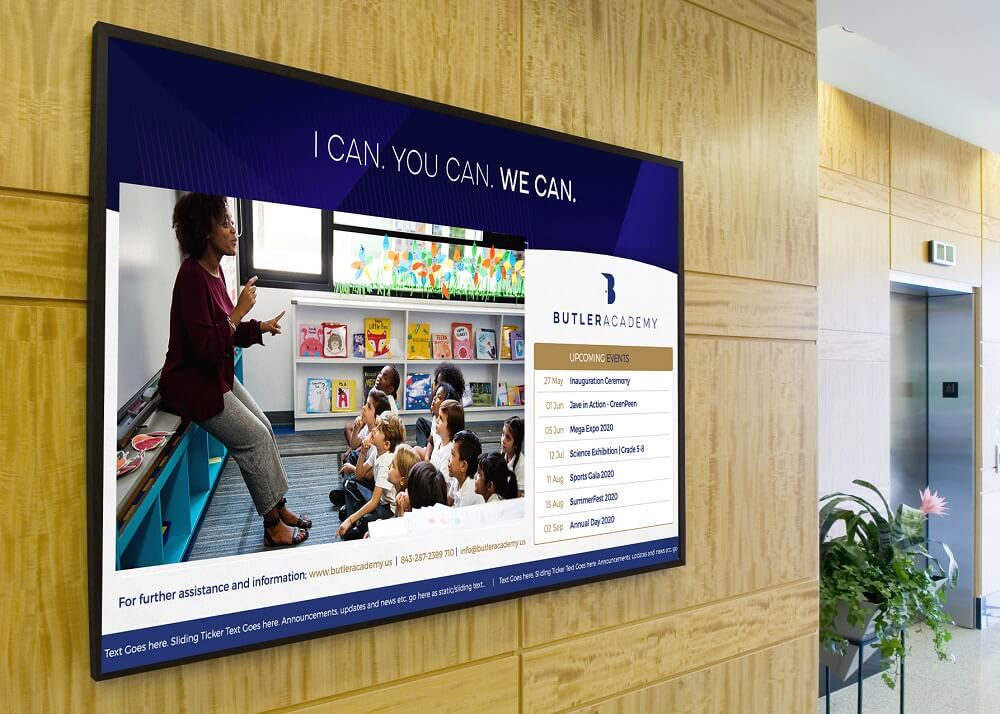While traditionally lagging behind corporations in embracing digital transformation, the education sector is rapidly catching up, with 70% of surveyed college campuses now incorporating digital displays. This surge in adoption can be largely attributed to higher educational institutions recognizing the myriad benefits of on-campus digital signage networks. As this trend continues, the education sector’s market share in digital signage is expected to expand further.
Digital signage offers a diverse range of solutions tailored for campus settings. Here are four key types:
1. Wayfinding and Interactive Maps: Navigating sprawling college campuses can be daunting for newcomers. Wayfinding digital signage, including interactive maps with touchscreen capabilities, streamlines navigation and enhances visitor experience.

2. Event and Announcement Boards: Digital signage effectively disseminates information about upcoming events, seminars, policy changes, and other news, ensuring timely communication with students, faculty, and visitors.

3. Digital Menu Boards: Cafeterias leverage digital menu boards to showcase specials, allergen information, and meal schedules, enhancing customer satisfaction and sales while simplifying content management.

4. Emergency Alert Systems: Digital displays play a crucial role in campus safety by providing emergency contact information and instructions, ensuring preparedness and response during crises.
The benefits of digital signage on college campuses are manifold:
Improved Communication: Dynamic content grabs attention and ensures targeted messaging reaches the intended audience promptly.
Enhanced Student Experience: Accurate information and updates, along with streamlined navigation, enrich the student experience beyond academics.
Time and Cost Savings: Eliminating printing and distribution costs while enabling real-time updates translates to significant savings in time and resources.
Increased Sustainability: Reduced paper waste aligns with campus sustainability goals, contributing to environmental conservation.
A case study exemplifying successful digital signage implementation at Montgomery Community College underscores the importance of partnering with reputable service providers like Mvix. By deploying a comprehensive digital signage network, MCC effectively engaged students and faculty, demonstrating the transformative impact of strategic digital communication solutions.

Implementation tips for maximizing digital signage effectiveness include:
1. Eye-Catching Content: Utilize visually compelling content to capture audience attention and engagement.
2. Incorporate Social Media Feeds: Integrate social media feeds to leverage students’ affinity for online platforms and foster interaction.
3. Ensure Accessibility: Adopt inclusive design practices to accommodate diverse student needs and abilities.
4. Maintain Freshness: Regularly update content to sustain interest and relevance among viewers.
5. Track Progress: Use analytical tools to assess performance and inform iterative improvements.
In conclusion, digital signage offers unparalleled effectiveness in campus communication, providing multimedia-rich, interactive solutions that enhance student experience, streamline operations, and promote sustainability. By embracing digital signage networks, educational institutions can elevate their campuses into dynamic, information-rich environments conducive to learning and engagement.





